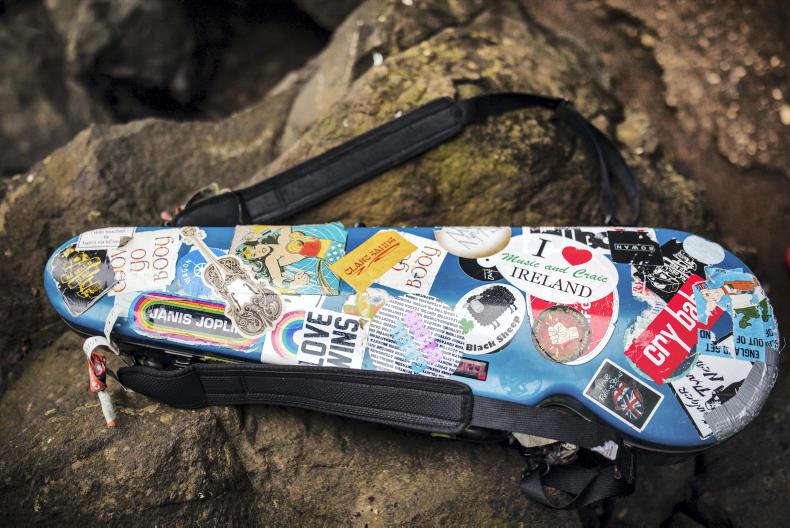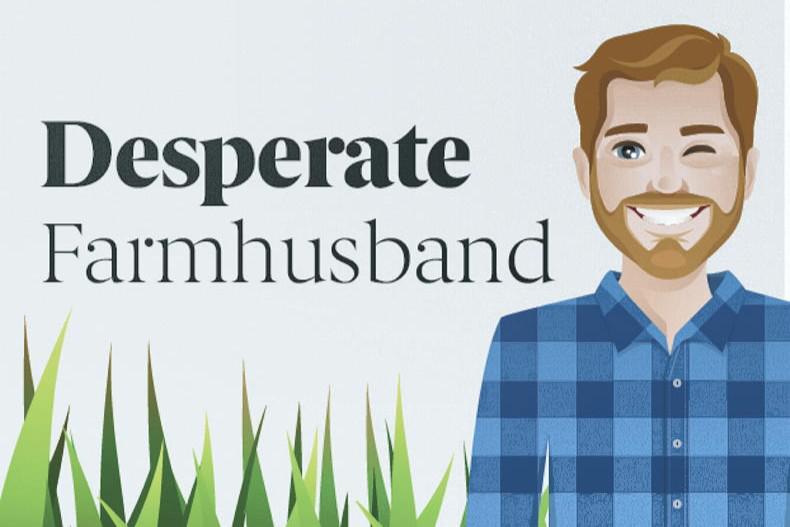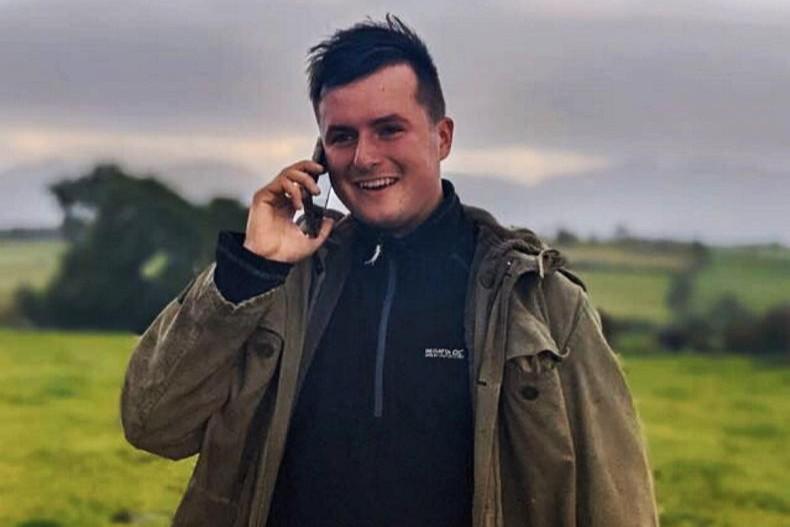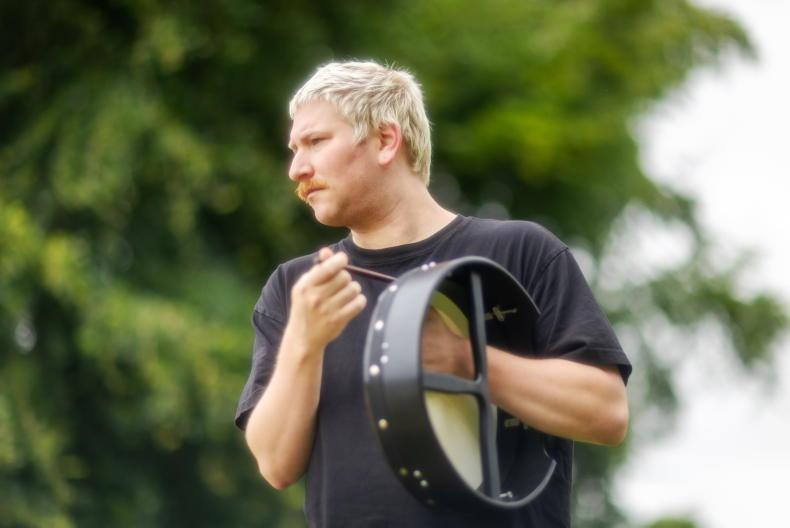As a musician with over 10 instruments at her command, a bi-lingual singer, a black belt martial artist and a long distance swimmer, it’s fair to say that Clare Sands is a woman of many - and we mean many - talents.
Though Irish Country Living reckons that we have the exclusive on yet another skillset.
“I have done my fair share of pulling lambs out of sheep,” laughs Clare, as we chat about her childhood memories on her mother’s family farm in Clonroche, Co Wexford; where she almost always makes a bee-line for after coming off-tour.
“Especially after the States,” she smiles, “to pop down to my granny and get a really good feed!”
Global stage
Indeed, Clare is just back from a micro-tour of Kansas and Chicago, where she balanced late night sessions with sub-zero morning dips.
“It just sets everything straight,” she explains of the importance of swimming while on tour. “There’s nothing much more that can go wrong if you’ve survived ?minus one Lake Michigan!”
But by the time you are reading this, she will have packed her bags once again for the US - playing in Florida for Patrick’s Day - before taking her brand of “fearless folk” to Germany and Switzerland, followed by a month-long tour of the UK with the Hothouse Flowers.
“I’ll be whipping them into shape and getting them swimming every morning!” she laughs.
(Somebody better warn Liam Ó Maonlaí and the lads.)
Clare’s energy is infectious. And it’s the same with her music. It’s both traditional and tribal, Irish and international, female and fierce. Imagine Gráinne Mhaol or Queen Maeve free-styling with a fiddle. Music that hits you like a puck to the gut; but in a good way.
What is the reaction when she plays internationally?
“If I’m being honest, some people might be disappointed because it’s not like Paddy-whackery,” she responds.
“But older generations, younger generations are delighted to hear somebody maybe doing something a little bit differently with it and to have that hope and passion at the core of the music and re-connecting with the language as well.
“It was mental to play at a festival last year in Milwaukee and hear people that were 70 and people that were 17 singing ‘ní neart go cur le chéile’ [‘there is no strength without unity’ from her song, Sail On]. That’s what it’s about for me really.”
In the blood
Clare is a sixth-generation musician (Northern Irish folk singer, Tommy Sands, is a cousin) whose roots stretch the length of the island of Ireland.
Her father, Seamus, is originally from Co Down, while her mother Susan was raised on that sheep farm in Co Wexford, but Clare herself grew up in Cork.
She was given her own fiddle at just three, and one of her earliest memories is of sitting on top of a washing machine with a bag of Taytos at a session at the Willie Clancy festival.
“I just remember some drunk person turning it [the washing machine] on,” she recalls.
“The kitchen was full of the finest musicians and I just sat there quietly on a washing machine jumping up and down; but I suppose it’s always that sense of community and the wee hours where it always kicks off.”

Clare Sands plays more than 10 instruments. \ Claire Nash
Formal classical lessons fine-tuned her skills, and after leaving school, Clare studied music and Italian at UCC, followed by a masters in composition and creative practice at the Irish World Academy.
“I always knew music was going to happen. Something strange happens when you’re from six or seven generations of people that it’s sort of in you,” she says; though having also represented Ireland in martial arts, it had been a toss-up between sports and music for a time.
“[But] being a professional martial artist was definitely going to be much more difficult than music!” she laughs.
Back to her roots
While Clare experimented with different genres along the way - her debut album in 2016, for instance, was jazz and blues - in the last two years, she has really returned to her “roots”.
“Which essentially is language and Irish traditional music, but at the moment, I’d definitely call it fearless folk,” she says.
Musicianship-wise, she plays over 10 instruments.
“There’s a few guitars, there’s a bass, there’s a cello, there’s a viola, there’s a violin,” she lists, glancing around the room as she does an informal inventory; but just as important to her style is the fact that she writes and sings in both English and Irish.
“It just opens up a world of possibilities,” she explains, “I like the way there can be layers and layers of meaning, which you don’t really get in English.”
She adds, however, that she was not raised as a Gaeilgeoir, but has become “completely obsessed” in recent years: living in Connemara during the COVID lockdowns and today, basing herself in the Gaeltacht quarter of Belfast where everybody on her street speaks Irish.
She likes to think that her lyrics are “accessible” to people who might also be on the journey of re-engaging with their mother-tongue.
“It’s not ?streams of poetry,” she qualifies. “It’s coming from the point of view of someone who is also on that journey I think, so there would be no Peig Sayers in it!”
As regards her singing style, she has been influenced by other Irish female artists who have sung “in their own accents”.
“People like Maura O’Connell, Karan Casey, Wallis Bird,” she lists, though every January for the last seven years, she has travelled to countries from Cuba to Columbia to soak in the sunshine; and the sounds.
“Travelling, I find things just flow out,” she says; though doesn’t overly dwell on the creative process.
“I don’t really think much about it; I just sort of write the song!”
One woman show
If you want to get a blast of the Clare Sands’ sound, check out ode to sisterhood Awe Na Mná (Praise the Women), the hypnotic Carry My Song with Susan O’Neill or the celebratory Sail On on her YouTube channel; with visually stunning accompanying videos filmed from Malin to Mizen.
The songs also feature on her most recent album - simply titled Clare Sands - which she describes as “a celebration of resilience, love and hope” exploring tradition, the sea and “the power of women through the dark and light, love and loss, and the rise and fall”.
Named by The Irish Times as one of the top five folk albums of 2022, Clare produced the record through a ?Fund It campaign (crowdfunding website for Ireland’s creative projects), “which is definitely a learning curve, but also gives you a lot more freedom”.

Clare sands photographed for an ICL feature Feb 2023 in Carrick Fergus\ Claire Nash
“Luckily enough, I can play the majority of the instruments and produce it myself,” she says; but as an independent Irish artist, there are barriers to commercial success.
“There’s just not enough female artists on the radio, like statistically speaking,” she says.
“That’s a massive problem and especially when you’re trying to do something like singing with a bit of Irish or a bit of folk music that’s native to Ireland, that doesn’t really get the support.
“It’s just the same pop music on repeat and look I don’t know what the solution is to that, but you just keep creating.”
With ticket sales for gigs yet to return to pre-COVID levels, such support from Irish radio is vital due to the income from royalties from plays from supportive DJs. But making a living as a musician in Ireland is a juggling act, with various streams required to survive.
“For me, it’s live performance and with the merch[andise] sales,” says Clare. “Things like Spotify are useless unless you’re Rhianna!”
Last year, Clare played at the legendary Glastonbury festival, but her highlight was her album launch on home turf in Cork city at St Luke’s. Following her international tour, she will be scheduling dates for Ireland in the autumn, while she will also be releasing four new collaborative songs and video projects under the banner of “Gormacha”, which translates as the “blues”.
Though she hopes that the impact on the listener will be entirely the opposite.
“The music for me, it’s always been about maybe acknowledging the darkness, but having the hope in all of the songs,” she says.
“And a lot of the songs, they sound dark, but always there’s the light at the end of the tunnel and I’m just a firm believer in music being hopeful; whatever that means for people.”
More info:
Visit www.claresands.com
As a musician with over 10 instruments at her command, a bi-lingual singer, a black belt martial artist and a long distance swimmer, it’s fair to say that Clare Sands is a woman of many - and we mean many - talents.
Though Irish Country Living reckons that we have the exclusive on yet another skillset.
“I have done my fair share of pulling lambs out of sheep,” laughs Clare, as we chat about her childhood memories on her mother’s family farm in Clonroche, Co Wexford; where she almost always makes a bee-line for after coming off-tour.
“Especially after the States,” she smiles, “to pop down to my granny and get a really good feed!”
Global stage
Indeed, Clare is just back from a micro-tour of Kansas and Chicago, where she balanced late night sessions with sub-zero morning dips.
“It just sets everything straight,” she explains of the importance of swimming while on tour. “There’s nothing much more that can go wrong if you’ve survived ?minus one Lake Michigan!”
But by the time you are reading this, she will have packed her bags once again for the US - playing in Florida for Patrick’s Day - before taking her brand of “fearless folk” to Germany and Switzerland, followed by a month-long tour of the UK with the Hothouse Flowers.
“I’ll be whipping them into shape and getting them swimming every morning!” she laughs.
(Somebody better warn Liam Ó Maonlaí and the lads.)
Clare’s energy is infectious. And it’s the same with her music. It’s both traditional and tribal, Irish and international, female and fierce. Imagine Gráinne Mhaol or Queen Maeve free-styling with a fiddle. Music that hits you like a puck to the gut; but in a good way.
What is the reaction when she plays internationally?
“If I’m being honest, some people might be disappointed because it’s not like Paddy-whackery,” she responds.
“But older generations, younger generations are delighted to hear somebody maybe doing something a little bit differently with it and to have that hope and passion at the core of the music and re-connecting with the language as well.
“It was mental to play at a festival last year in Milwaukee and hear people that were 70 and people that were 17 singing ‘ní neart go cur le chéile’ [‘there is no strength without unity’ from her song, Sail On]. That’s what it’s about for me really.”
In the blood
Clare is a sixth-generation musician (Northern Irish folk singer, Tommy Sands, is a cousin) whose roots stretch the length of the island of Ireland.
Her father, Seamus, is originally from Co Down, while her mother Susan was raised on that sheep farm in Co Wexford, but Clare herself grew up in Cork.
She was given her own fiddle at just three, and one of her earliest memories is of sitting on top of a washing machine with a bag of Taytos at a session at the Willie Clancy festival.
“I just remember some drunk person turning it [the washing machine] on,” she recalls.
“The kitchen was full of the finest musicians and I just sat there quietly on a washing machine jumping up and down; but I suppose it’s always that sense of community and the wee hours where it always kicks off.”

Clare Sands plays more than 10 instruments. \ Claire Nash
Formal classical lessons fine-tuned her skills, and after leaving school, Clare studied music and Italian at UCC, followed by a masters in composition and creative practice at the Irish World Academy.
“I always knew music was going to happen. Something strange happens when you’re from six or seven generations of people that it’s sort of in you,” she says; though having also represented Ireland in martial arts, it had been a toss-up between sports and music for a time.
“[But] being a professional martial artist was definitely going to be much more difficult than music!” she laughs.
Back to her roots
While Clare experimented with different genres along the way - her debut album in 2016, for instance, was jazz and blues - in the last two years, she has really returned to her “roots”.
“Which essentially is language and Irish traditional music, but at the moment, I’d definitely call it fearless folk,” she says.
Musicianship-wise, she plays over 10 instruments.
“There’s a few guitars, there’s a bass, there’s a cello, there’s a viola, there’s a violin,” she lists, glancing around the room as she does an informal inventory; but just as important to her style is the fact that she writes and sings in both English and Irish.
“It just opens up a world of possibilities,” she explains, “I like the way there can be layers and layers of meaning, which you don’t really get in English.”
She adds, however, that she was not raised as a Gaeilgeoir, but has become “completely obsessed” in recent years: living in Connemara during the COVID lockdowns and today, basing herself in the Gaeltacht quarter of Belfast where everybody on her street speaks Irish.
She likes to think that her lyrics are “accessible” to people who might also be on the journey of re-engaging with their mother-tongue.
“It’s not ?streams of poetry,” she qualifies. “It’s coming from the point of view of someone who is also on that journey I think, so there would be no Peig Sayers in it!”
As regards her singing style, she has been influenced by other Irish female artists who have sung “in their own accents”.
“People like Maura O’Connell, Karan Casey, Wallis Bird,” she lists, though every January for the last seven years, she has travelled to countries from Cuba to Columbia to soak in the sunshine; and the sounds.
“Travelling, I find things just flow out,” she says; though doesn’t overly dwell on the creative process.
“I don’t really think much about it; I just sort of write the song!”
One woman show
If you want to get a blast of the Clare Sands’ sound, check out ode to sisterhood Awe Na Mná (Praise the Women), the hypnotic Carry My Song with Susan O’Neill or the celebratory Sail On on her YouTube channel; with visually stunning accompanying videos filmed from Malin to Mizen.
The songs also feature on her most recent album - simply titled Clare Sands - which she describes as “a celebration of resilience, love and hope” exploring tradition, the sea and “the power of women through the dark and light, love and loss, and the rise and fall”.
Named by The Irish Times as one of the top five folk albums of 2022, Clare produced the record through a ?Fund It campaign (crowdfunding website for Ireland’s creative projects), “which is definitely a learning curve, but also gives you a lot more freedom”.

Clare sands photographed for an ICL feature Feb 2023 in Carrick Fergus\ Claire Nash
“Luckily enough, I can play the majority of the instruments and produce it myself,” she says; but as an independent Irish artist, there are barriers to commercial success.
“There’s just not enough female artists on the radio, like statistically speaking,” she says.
“That’s a massive problem and especially when you’re trying to do something like singing with a bit of Irish or a bit of folk music that’s native to Ireland, that doesn’t really get the support.
“It’s just the same pop music on repeat and look I don’t know what the solution is to that, but you just keep creating.”
With ticket sales for gigs yet to return to pre-COVID levels, such support from Irish radio is vital due to the income from royalties from plays from supportive DJs. But making a living as a musician in Ireland is a juggling act, with various streams required to survive.
“For me, it’s live performance and with the merch[andise] sales,” says Clare. “Things like Spotify are useless unless you’re Rhianna!”
Last year, Clare played at the legendary Glastonbury festival, but her highlight was her album launch on home turf in Cork city at St Luke’s. Following her international tour, she will be scheduling dates for Ireland in the autumn, while she will also be releasing four new collaborative songs and video projects under the banner of “Gormacha”, which translates as the “blues”.
Though she hopes that the impact on the listener will be entirely the opposite.
“The music for me, it’s always been about maybe acknowledging the darkness, but having the hope in all of the songs,” she says.
“And a lot of the songs, they sound dark, but always there’s the light at the end of the tunnel and I’m just a firm believer in music being hopeful; whatever that means for people.”
More info:
Visit www.claresands.com











SHARING OPTIONS